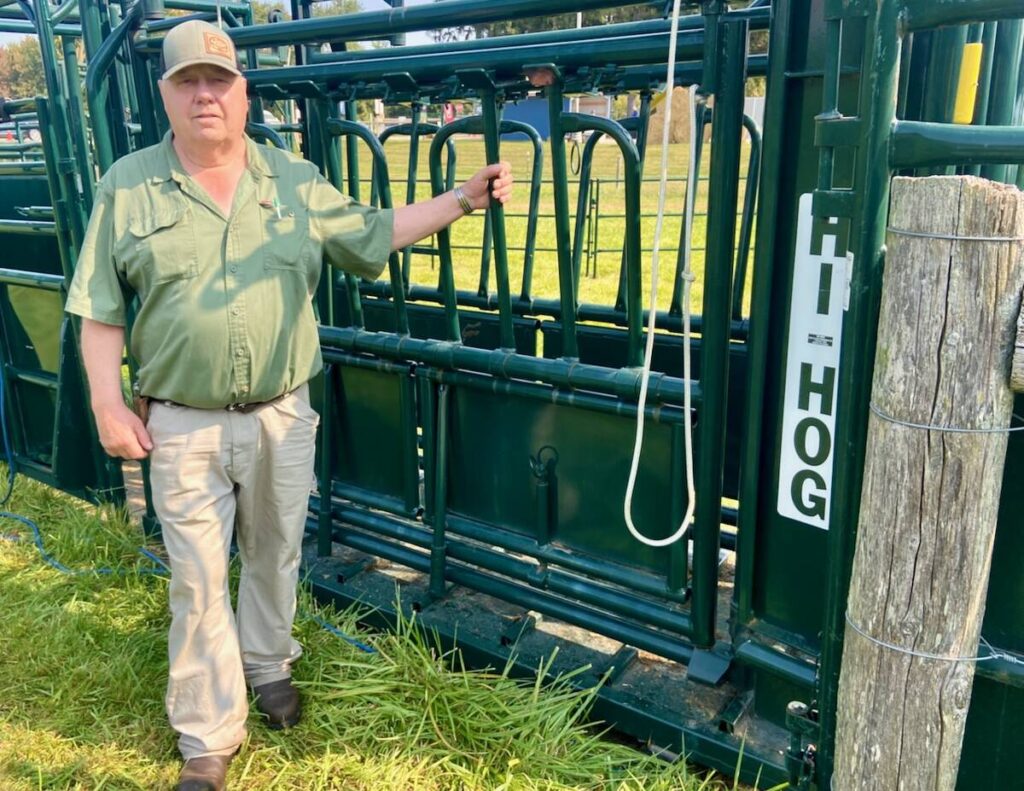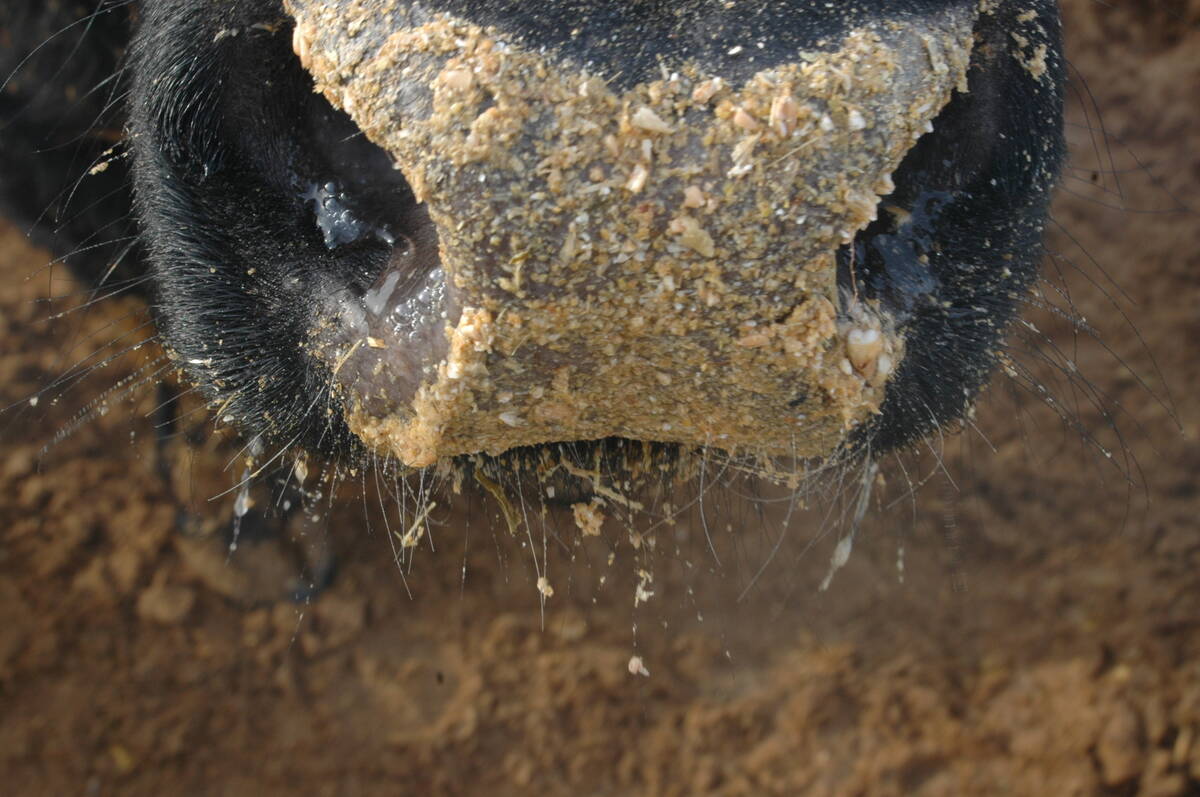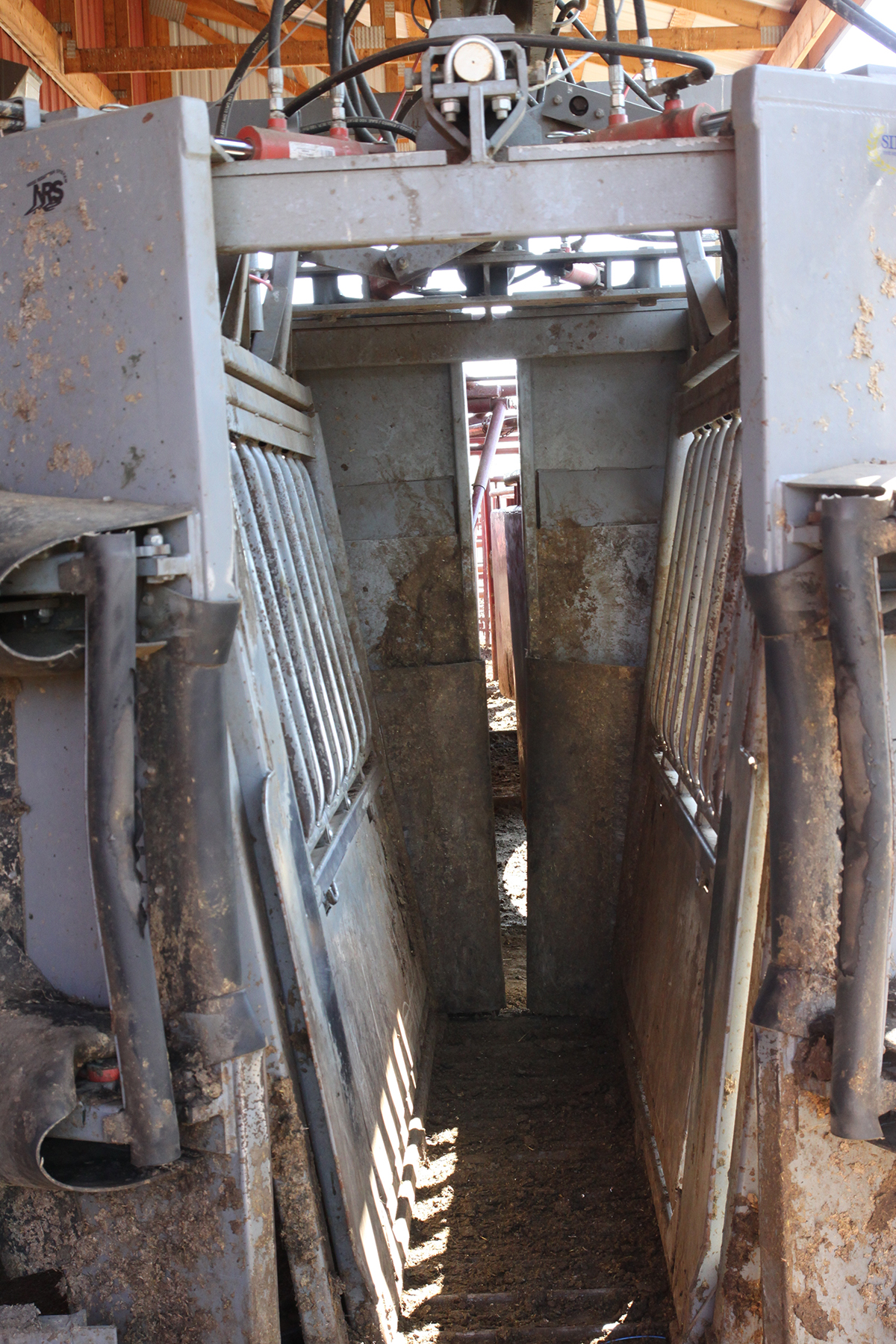Handling equipment can calm cattle

There’s consensus that keeping cattle calmer during handling reduces the stress for the animals and the people managing them.
That’s led to long-term evolution in cattle handling equipment to the point where it is now based on moving animals through chutes and squeezes in a way that most naturally fits cattle behaviour.
For equipment manufacturers, that means using more round penning, improving sight lines and keeping the animal stable with all four feet on the ground.
Read Also


Drought drives stored feed, byproduct use in cow-calf herds
The lingering drought in parts of the Prairies is changing the way some beef producers feed their cows.
Myron Wigness of Hi-Hog Farm and Ranch Equipment based in Calgary, says distractions have been reduced for the cattle, and that helps make it safer for operators and their families.
“I think the biggest improvements that we’ve had is almost everybody is building an alley adjustable now so you can actually fit them properly and keep them nose to tail, without them wedging or climbing,” he said at Canada’s Outdoor Farm Show.
Solid sheeting in the handling area means the animals can’t see out, which keeps them focused on the other animals in front of them and moving forward.
“They don’t get to see the kids and the dog and everything else that are distractions to them,” he says.
The tub can be a safe place for the cattle compared to running in a pasture where there are many new things to see.
“It’s very important every time you handle your animals that it’s as pleasant as it can possibly be, just because of that reason — you’ll have to catch them again.”
Most companies designing handling equipment have followed more of the Temple Grandin school of cattle handling with rounded corners and controlled sight lines for the cattle, rather than the Bud Williams style, using a Bud Box.
The Bud Box system emphasizes lessons learned from how humans influence cattle movement through their flight zones within a pen. Cattle flow past the alley leading to the squeeze, or a ramp, and a gate is shut next to the alley. Then the cattle naturally flow back around in a circle to the gate and should then walk calmly up the alley.


For people handling cattle a couple of times per year, with lots of distractions, such as kids and dogs in the near vicinity, the system with more steel can be the best choice, says Wigness.
“I think the tub situation is a little safer, like our tub crowding gate is 440 pounds of steel. You’ve got that between you and those back feet, so you’ll probably keep your teeth,” says Wigness.
The name for the business end of a cattle handling alley has been a squeeze for a long time, but it’s not that accurate anymore, he adds.
The old V-type squeezes made cattle feel like they were almost being tipped. Now, the walls come in together and make sure that the animal has all four feet on the ground, which makes them more comfortable.
“We probably shouldn’t call him the squeeze because you’re not really squeezing them, you’re fitting them, because you do have to get that animal in there again.”
And it’s not just the equipment that’s getting better for the cattle; people are also better at managing their stock.
“Not everybody is born to be a stockman, but there’s a lot more training available. In general, I would say that people in the industry are becoming far better stock people,” says Wigness.
Source: producer.com


